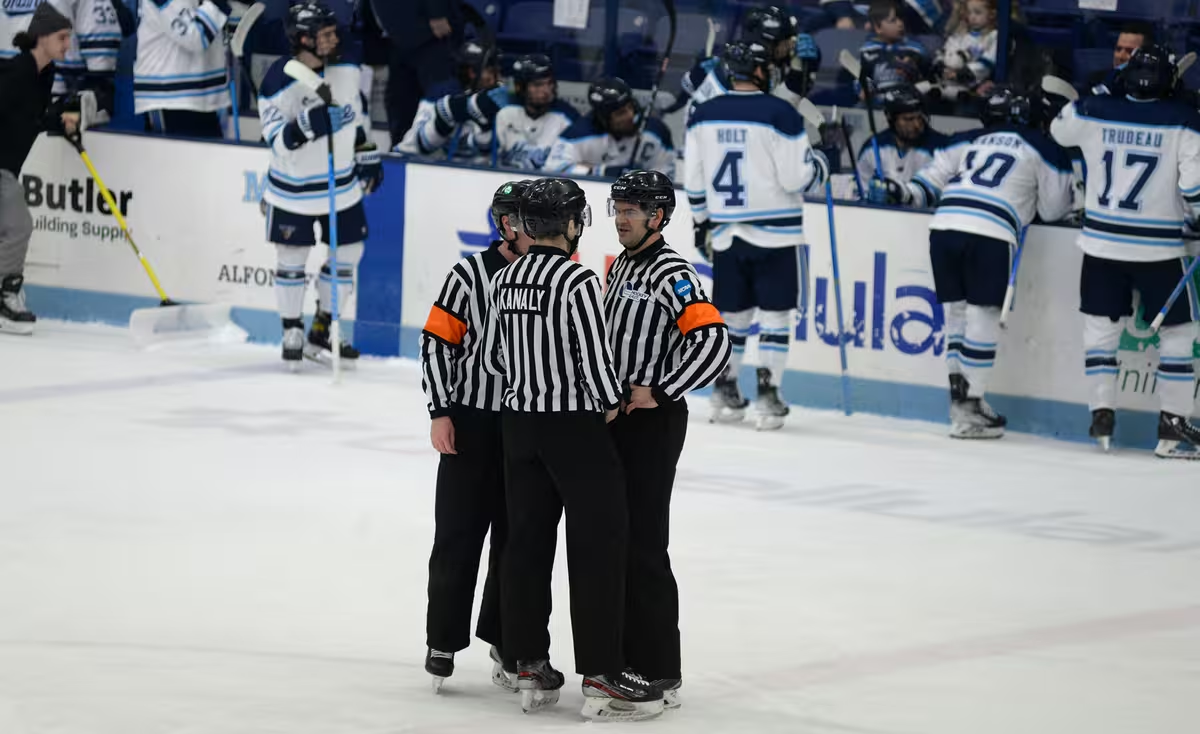This past season, if a U.S. college hockey player touched a puck with their stick higher than 4 feet off the ice, the referees would blow the whistle and stop play. A faceoff would ensue.
Not any more.
Last month, the NCAA Playing Rules Oversight Panel voted to change the high stick rule.
Beginning this season, a men’s or women’s player will be allowed to play the puck if it is shoulder height. But anything above the shoulder won’t be allowed.
That will also apply to goals scored with an elevated stick.
The high stick rule change put forth to the Playing Rules Oversight Panel by the NCAA Men’s and Women’s Ice Hockey Committee was designed to simplify the call for referees, according to a story in NCAA.org.
Previously, referees had to make a judgment call whether or not the puck was 4 feet off the ice.
University of Maine head coach Ben Barr said he will take a wait-and-see attitude because the size of players may affect calls.
“What is the shoulder height of a player who is 6-feet-6?,” posed Barr. “The goal is 4 feet high. If someone scores a goal with a stick that is above the crossbar, is it a goal or isn’t it?
“I don’t know if this is going to make it easier or harder on referees. It’s hard to tell,” said Barr.
That is one of several rule changes implemented for the 2024-25 season.
Among the other rule changes:
- If a team scores a goal on a delayed penalty, the penalty to the opposing player will be rescinded and both teams will be at even strength.
Several years ago, the NCAA implemented a rule that forced the penalized player to still serve the two-minute penalty even if a goal was scored during the delayed penalty situation.
So a team could score two goals on one penalty.
Barr is glad they have changed the rule back to the way it used to be.
“That could have had a drastic impact on a game. To get scored on and then have to kill a penalty afterwards (is rough),” said Barr. “(NCAA hockey) was the only major level that did it that way.”
- Referees will be able to award a goal if a puck goes across the goal line in the immediate and continuous action after the referee has blown the whistle because he or she lost sight of the puck.
Last year, play was dead as soon as the whistle was blown so if the puck carried into the net, it wouldn’t have counted.
Barr is in favor of the new rule.
“If the puck would have gone in the net (on the continuation of…
Click Here to Read the Full Original Article at "ice hockey" – Google News…

